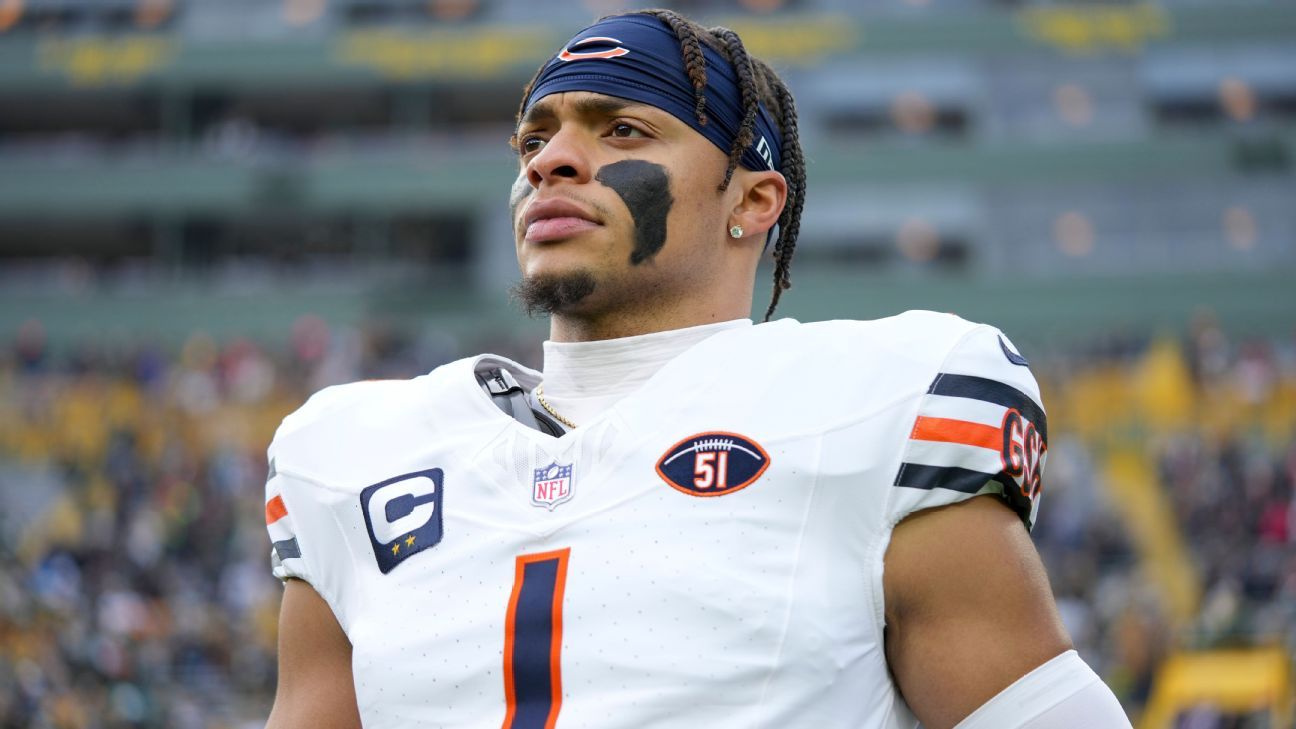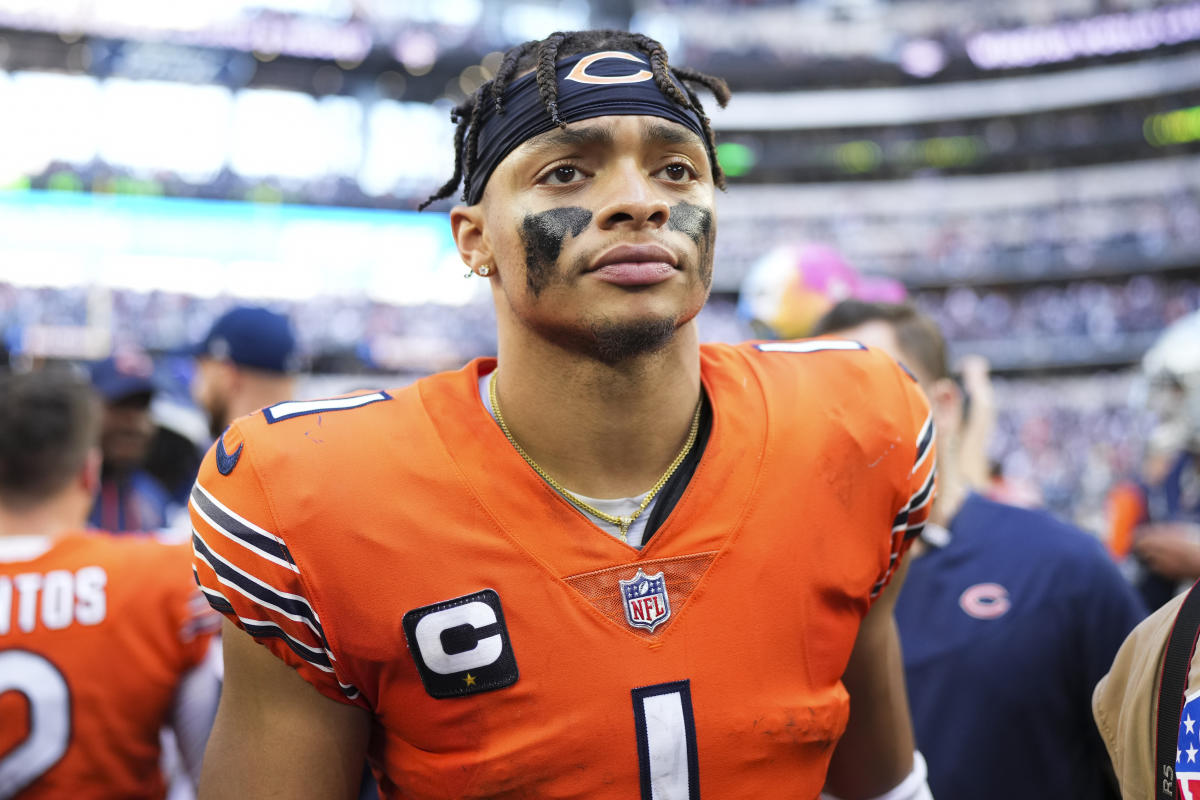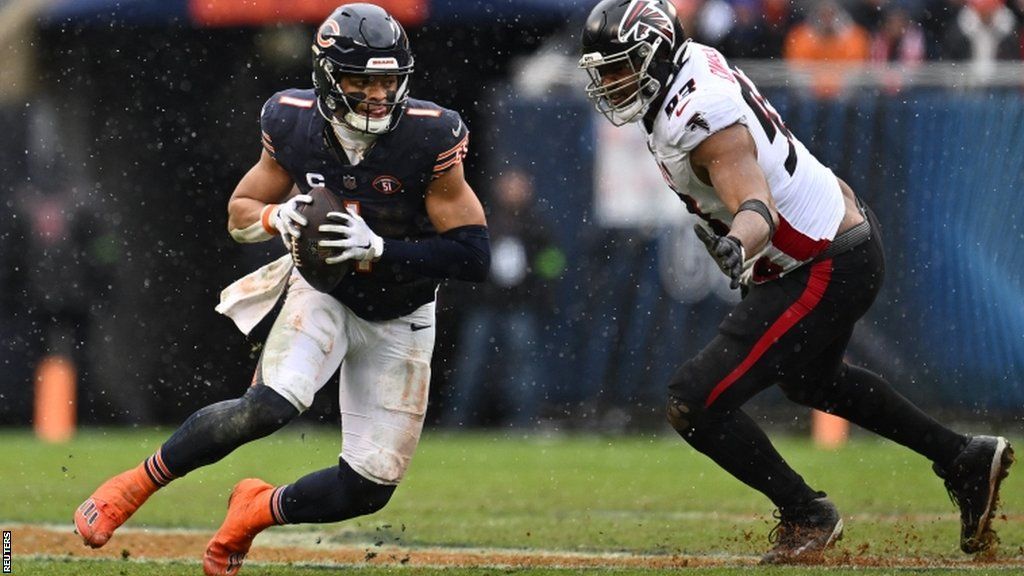
When quarterback Patrick Mahomes was selected by Kansas City in 2017, Ryan Poles, the general manager of the Chicago Bears, was the Chiefs’ director of college scouting. Mahomes spent a year learning under experienced starter Alex Smith. Poles is aware that the dynamic might function.
But he wasn’t dealing with the Bears like that.

Rather than having Smith, a proven starter, the Bears had Justin Fields, a question mark for growth heading into his fourth season. Even for offseason workouts and training camp, having a No. 1 choice like USC quarterback Caleb Williams in the mix may have made things unworkable, or at the very least awkward, for both players. As a number of Bears players have recently expressed their strong support for Fields, it was necessary to take the possibility of locker room strife into account.
By dealing Fields to the Pittsburgh Steelers on Saturday night for a 2025 sixth-round pick—which becomes a fourth round pick if Fields plays 51% of the offensive snaps this season—Poles were able to escape that situation.

Before the transaction, an NFL assistant coach told ESPN, “You just can’t [have both on the roster].” “The league successfully called Chicago’s bluff.
“They’re not getting anything for [Fields], and just need to let him go.”
It was evidently not the recompense that Poles had initially demanded. According to a person familiar with the team’s preparations, the Bears had originally planned to select a player on Day 2 of the draft in addition to a conditional late 2025 pick. A number of offers were made to six teams, including Pittsburgh, most of which saw Fields as a backup.

Fields’s market was contracting amid a rush of QB action. Several NFL front office sources told ESPN that, after failing to move Fields before the start of free agency, they felt Chicago’s best chance to receive the money it wanted, or something close to it, would be if a team missed out on the quarterback it intended to choose in April.
Poles also had the option to hold out until the start of the season and initiate trade negotiations with that team once a starting quarterback suffered an injury.
However, when Poles stated at the February combine that he wanted to “do right” by Fields, he meant that he didn’t want to wait a long time to be dealt. It also meant that the Steelers, who signed Russell Wilson to a one-year contract, did not need to deal him to a team with a young starting quarterback.

“We have engaged in multiple trade conversations in recent weeks and believe trading Justin at this time to Pittsburgh is what is best for both Justin and the Bears,” Poles stated in a press release. “We had a conversation with Justin to let him know about the transaction and our club’s reasoning for it.
“We want to thank him for his tireless dedication, leadership and all he poured into our franchise and community the last three years and wish him the best towards a long and successful NFL career.”
Fields praised the Bears and the city of Chicago “for allowing me the opportunity to be part of such a historic franchise” in a social media statement on Saturday.
Being able to split ways amicably with Fields—who was selected by general manager Ryan Pace in 2021—meant a great deal to Poles. Had he chosen to choose Williams instead of Fields, it might not have happened.
Furthermore, as he mentioned during the combine, there are other aspects to take into account, and Poles wanted to ensure that his new quarterback had the best chance of succeeding.
“What’s the infrastructure look like?” he said. “What surrounds the athlete? That seems to be crucial.
A competitive roster surrounds the rookie quarterback the Bears will select in Chicago.

Wide receiver DJ Moore and recently signed wide receiver Keenan Allen are the only teammates in the NFL with at least 90 receptions and 1,200 yards in 2023. The Bears added Gerald Everett to the tight end room, boosted their backfield with D’Andre Swift, and strengthened their offensive line by bringing in Coleman Shelton, a projected starter at center. Tremaine Edmunds, a linebacker, cornerback Jaylon Johnson, and defensive end Montez Sweat are just a few of the talented players on Chicago’s youthful defense.
Poles distinguished themselves from the organization’s previous methods by defining a distinct role for their soon-to-be new quarterback one. For example, when the team traded up to draft Fields, they positioned him between two seasoned quarterbacks, Andy Dalton and Nick Foles, who were reluctant to give up their positions to a rookie.
Once the first round of the draft is completed on April 25, there won’t be any uncertainty regarding the starting quarterback for the Bears. How great of an improvement over Fields will he be is the only unanswered question.





